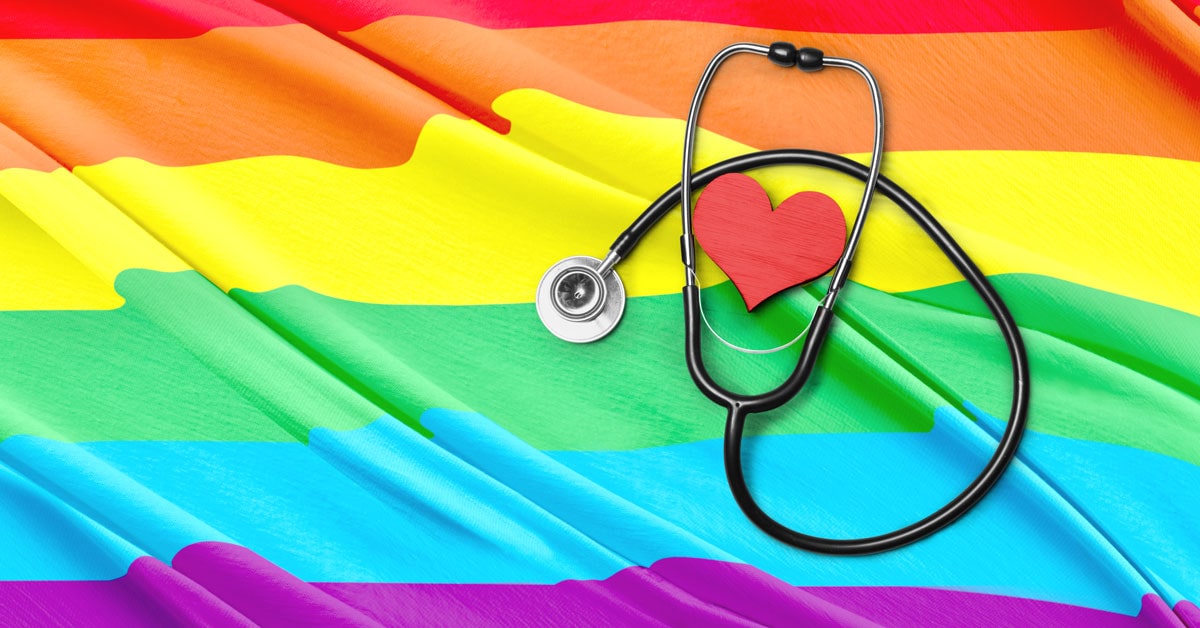The decision to disclose one’s sexual orientation or gender identity to a healthcare professional is deeply personal and often fraught with apprehension. For many within the LGBTQIA+ community, this choice carries significant weight, as it can profoundly influence the quality of medical care received. By sharing such information, individuals enable healthcare providers to deliver more comprehensive, tailored, and culturally competent care. This article explores the multifaceted benefits of coming out to healthcare professionals, the challenges faced by LGBTQIA+ individuals in medical settings, and practical strategies to navigate these conversations effectively. Additionally, it situates this topic within broader historical, cultural, and societal contexts to underscore its importance.
Why Disclosure Matters in Healthcare
Healthcare is inherently personal, requiring trust and open communication between patients and providers. For LGBTQIA+ individuals, disclosing sexual orientation or gender identity can enhance the accuracy of diagnoses, the appropriateness of preventive screenings, and the personalization of treatment plans. This openness allows doctors to address specific health risks, recommend relevant interventions, and provide mental health support tailored to the unique experiences of LGBTQIA+ patients.
Historical Context: The Evolution of LGBTQIA+ Healthcare
The relationship between the LGBTQIA+ community and the healthcare system has historically been fraught with challenges. In the mid-20th century, homosexuality was classified as a mental disorder in the Diagnostic and Statistical Manual of Mental Disorders (DSM) until its removal in 1973. Transgender identities were similarly pathologized under terms like "gender identity disorder" until the DSM-5, published in 2013, adopted the less stigmatizing term "gender dysphoria." These shifts reflect growing societal acceptance and evolving medical understanding, but they also highlight a legacy of mistrust stemming from decades of discriminatory practices.
During the HIV/AIDS crisis of the 1980s and 1990s, the LGBTQIA+ community faced significant stigma within healthcare settings. Misinformation and prejudice often led to inadequate care, with many gay men and transgender individuals experiencing outright discrimination or refusal of treatment. Advocacy from groups like ACT UP and the Gay Men’s Health Crisis pushed for better access to care and research, laying the groundwork for modern culturally competent healthcare practices. Today, while progress has been made, disparities persist, making open communication about identity even more critical.
Cultural Influences on Disclosure
Cultural attitudes toward sexual orientation and gender identity vary widely, influencing how individuals approach disclosure in medical settings. In some cultures, discussing sexuality or gender openly is taboo, which can deter patients from sharing this information. For example, in collectivist societies where family expectations and social conformity are prioritized, individuals may fear judgment or ostracism, even in private medical consultations. Conversely, in more individualistic societies, patients may feel empowered to be open but still face providers who lack training in LGBTQIA+ health needs.
Religious beliefs can also play a role. Some individuals from conservative religious backgrounds may hesitate to disclose their identity due to fear of moral judgment from healthcare providers. Conversely, affirming healthcare environments—such as clinics specializing in LGBTQIA+ care or those displaying inclusive symbols like rainbow flags—can create a sense of safety, encouraging disclosure.
Health Disparities and the Need for Comprehensive Care
LGBTQIA+ individuals face unique health disparities that underscore the importance of disclosure. Research consistently shows higher rates of mental health challenges, including depression, anxiety, and suicidal ideation, among LGBTQIA+ populations. These issues are often linked to minority stress—a term describing the chronic stress experienced due to societal stigma, discrimination, and internalized prejudice. For example, a 2020 study found that 40% of LGBTQIA+ adults reported experiencing discrimination in healthcare settings, which can deter them from seeking care or being fully transparent with providers.
Specific Health Needs
Sexual orientation and gender identity influence various health considerations. For instance, men who have sex with men (MSM) have a higher risk of certain sexually transmitted infections (STIs), such as HIV and syphilis, necessitating specific screening protocols. Transgender individuals may require hormone replacement therapy (HRT), which involves monitoring for side effects like cardiovascular risks or liver function changes. Lesbian and bisexual women may have different breast cancer screening needs based on factors like nulliparity (never having given birth), which is more common in these groups.
Mental health is another critical area. Transgender youth, for example, face elevated rates of anxiety and depression, often exacerbated by family rejection or societal transphobia. When healthcare providers are aware of a patient’s identity, they can proactively offer resources like counseling or support groups. Similarly, fertility planning and family-building options are vital for same-sex couples and transgender individuals, who may need guidance on assisted reproductive technologies or adoption processes.
“When healthcare providers understand a patient’s full identity, they can tailor care to address specific risks and needs, fostering trust and improving outcomes.”
Benefits of Disclosure
Coming out to a healthcare professional offers several tangible benefits, from improved diagnostic accuracy to enhanced emotional well-being. Below, we explore these advantages in detail.
Targeted Preventive Care
Disclosure allows providers to recommend screenings and interventions based on actual risk factors rather than assumptions. For example, a bisexual woman who discloses her sexual history might be advised to undergo regular STI testing, even if she is in a monogamous relationship with a woman, as her past sexual practices could influence her risk profile. Similarly, transgender men who retain female reproductive organs may need cervical cancer screenings, which a provider might not otherwise recommend without knowing their gender identity.
Enhanced Mental Health Support
LGBTQIA+ individuals often face unique mental health challenges due to societal pressures. For instance, the Trevor Project’s 2023 National Survey on LGBTQ Youth Mental Health reported that 60% of transgender and nonbinary youth experienced discrimination due to their gender identity, contributing to high rates of suicidal ideation. When providers are aware of a patient’s identity, they can screen for signs of distress, refer patients to affirming mental health professionals, or prescribe medications with an understanding of how minority stress might affect treatment efficacy.
Personalized Treatment Plans
Tailored care extends beyond screenings to include treatment plans that align with a patient’s life goals. For transgender individuals, this might involve coordinating hormone therapy with surgical planning or discussing fertility preservation options before initiating HRT. For same-sex couples, providers can offer guidance on family planning, such as intrauterine insemination (IUI) or in vitro fertilization (IVF). By understanding a patient’s identity, providers can also avoid prescribing treatments that conflict with their needs—for example, avoiding medications that interfere with hormone therapy.
Building Trust and Reducing Anxiety
Open communication fosters trust, which is essential for a strong doctor-patient relationship. When patients feel safe disclosing their identity, they are more likely to share other sensitive information, such as substance use or mental health symptoms, leading to more accurate diagnoses. Feeling accepted by a provider also reduces anxiety, encouraging patients to seek regular care rather than avoiding medical settings due to fear of judgment.
Challenges and Barriers to Disclosure
Despite the benefits, many LGBTQIA+ individuals hesitate to come out to healthcare providers due to legitimate concerns about discrimination, privacy, or lack of provider competence. These barriers are rooted in both personal experiences and systemic issues within healthcare.
Discrimination and Stigma
Discrimination remains a significant barrier. A 2015 U.S. Transgender Survey found that 33% of respondents who saw a healthcare provider in the past year reported a negative experience related to their gender identity, such as being misgendered or refused treatment. Such experiences can lead to mistrust, causing patients to withhold information or avoid care altogether.
Lack of Provider Training
Many healthcare providers lack adequate training in LGBTQIA+ health. For example, a 2018 study published in the Journal of General Internal Medicine found that only 26% of medical schools offered comprehensive training on transgender healthcare. This knowledge gap can result in providers making uninformed assumptions or failing to address specific health needs, further discouraging disclosure.
Privacy Concerns
Patients may worry about the confidentiality of their information, particularly in small communities where healthcare providers might know their families or social circles. For transgender individuals, concerns about medical records reflecting their gender identity or birth sex can also deter openness, especially if they fear this information could be shared without consent.
Strategies for Coming Out to Healthcare Providers
Navigating the process of disclosure requires careful consideration of timing, setting, and personal comfort. Below are practical strategies to make the conversation smoother and more effective.
Direct Disclosure During Medical History
One straightforward approach is to share relevant information during the medical history portion of an appointment. For example, a patient might say, “I’m gay, and I’m in a monogamous relationship,” when discussing sexual health. This directness ensures the provider has the necessary context to recommend appropriate care.
Natural Conversation
Disclosure can also occur organically. For instance, mentioning a partner using their correct pronouns—“My wife and I are planning to start a family”—conveys sexual orientation naturally. This approach feels less formal and can ease patients into the conversation.
Written Communication
For those who find verbal disclosure challenging, written communication offers a valuable alternative. Many healthcare facilities now include questions about sexual orientation and gender identity on intake forms, allowing patients to share this information anonymously before the appointment. Alternatively, patients can prepare a note outlining their identity and health concerns to hand to the provider.
Choosing the Right Timing
Timing matters. Some patients prefer to disclose early in their relationship with a new provider to establish trust from the outset. Others may wait until the information becomes directly relevant, such as during a visit for sexual health or mental health concerns. Both approaches are valid, and the choice depends on personal comfort and the nature of the visit.
Bringing a Support Person
Having a trusted friend, family member, or partner present during an appointment can provide emotional support and help advocate for appropriate care. For example, a support person who is also part of the LGBTQIA+ community may offer insights into navigating healthcare systems or share their own positive experiences with disclosure.
Preparing Questions
Coming prepared with specific questions can guide the conversation and ensure key topics are addressed. Examples include:
- “What experience do you have with LGBTQIA+ health issues?”
- “How do you ensure confidentiality for sensitive information?”
- “Are there specific screenings or resources you recommend based on my identity?”
These questions not only clarify the provider’s competence but also signal that the patient expects inclusive, respectful care.
Cultural Competency in Healthcare
For disclosure to be effective, healthcare providers must demonstrate cultural competency—the ability to understand and respect the diverse identities and experiences of their patients. This includes using correct pronouns, avoiding assumptions about sexual practices, and staying informed about LGBTQIA+ health needs.
The Role of Training
Medical schools and continuing education programs are increasingly incorporating LGBTQIA+ health into their curricula, but gaps remain. Providers can enhance their competency by seeking out training from organizations like the Fenway Institute or the World Professional Association for Transgender Health (WPATH). These programs cover topics like hormone therapy, mental health disparities, and inclusive communication strategies.
Creating Inclusive Environments
Healthcare facilities can foster trust by creating visibly inclusive environments. Displaying rainbow flags, offering gender-neutral restrooms, and training staff in inclusive language signal to patients that their identities are respected. Electronic health records (EHRs) should also allow patients to specify their pronouns and gender identity, ensuring this information is accessible to providers while maintaining confidentiality.
The Broader Impact of Disclosure
Beyond individual health outcomes, disclosure has broader implications for systemic change. When patients are open about their identities, they contribute to normalizing these conversations in healthcare settings. This, in turn, encourages providers to seek out training and advocate for inclusive policies. Over time, widespread disclosure can help dismantle stigma and reduce disparities, creating a healthcare system that serves all individuals equitably.
Advocacy and Community Support
LGBTQIA+ advocacy organizations play a crucial role in supporting disclosure and improving healthcare access. Groups like GLMA: Health Professionals Advancing LGBTQ Equality provide resources for both patients and providers, including directories of affirming clinicians. Community health centers, such as those affiliated with the Callen-Lorde Community Health Center in New York, offer specialized care tailored to LGBTQIA+ needs, creating safe spaces for disclosure.
Conclusion
Coming out to a healthcare professional is a deeply personal decision, but one that can significantly enhance the quality of medical care. By sharing information about sexual orientation and gender identity, patients enable providers to offer targeted screenings, personalized treatment plans, and culturally competent care. While challenges like discrimination and lack of provider training persist, strategies such as direct disclosure, written communication, and bringing a support person can make the process more manageable.
The historical and cultural context of LGBTQIA+ healthcare underscores the importance of openness in overcoming longstanding disparities. As society continues to evolve toward greater acceptance, patients and providers alike have a role to play in fostering trust and ensuring that healthcare is inclusive, respectful, and effective for all.



















0 Comments